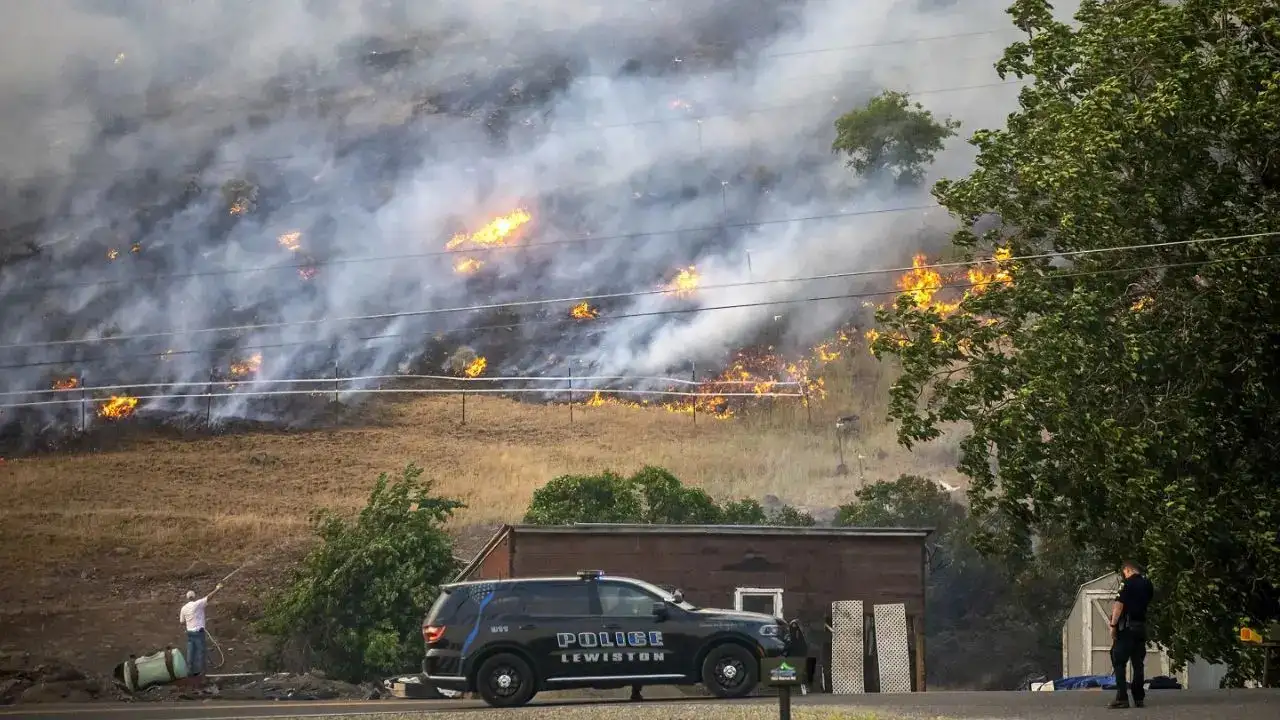
Wildfire Smoke Crisis Impact – An Unprecedented Wildfire Smoke Emergency
Canada, renowned for its vast wilderness and pristine landscapes, is currently grappling with an escalating environmental crisis. The relentless wildfires sweeping through parts of the country have generated vast amounts of smoke, which is now smothering urban centers across the nation and drifting into neighboring regions, notably the US Midwest. This alarming situation has prompted widespread health warnings and prompted authorities to take urgent measures to protect vulnerable populations. As wildfires become more frequent and severe due to climate change, understanding the scope and impact of this crisis is vital for both immediate relief efforts and long-term strategies.
The Rapid Spread of Wildfire Smoke
Canada’s extensive forests and tundra serve as a natural fire fuel, but recent years have seen a disturbing rise in wildfire incidents. According to reports from The Economic Times, the wildfire smoke mass has been spreading rapidly, covering urban centers like Toronto, Vancouver, Calgary, and even reaching remote provinces such as Quebec and Manitoba. This smoke has also traveled southward, affecting cities across the US Midwest, including Chicago, Minneapolis, and Detroit, creating a transnational health menace.
Health Warnings and Emergency Responses
The health implications of this widespread smoke are profound. As the smoke contains harmful pollutants such as particulate matter (PM2.5), ground-level ozone, and toxic gases, health authorities have issued urgent warnings to citizens.
Key health advisories include:
- Avoid outdoor activities: Vulnerable groups, especially children, seniors, and those with pre-existing respiratory or cardiovascular conditions, are advised to stay indoors.
- Use masks: When venturing outside, wearing properly fitted N95 masks can significantly reduce inhalation of hazardous particles.
- Maintain indoor air quality: Utilize air purifiers and keep windows and doors closed to minimize indoor pollution exposure.
- Seek medical attention: Those experiencing symptoms such as difficulty breathing, chest tightness, dizziness, or persistent cough should consult healthcare professionals immediately.
The governments of Canada and several US states have responded by establishing emergency health centers, distributing masks, and monitoring air quality levels through real-time data. Schools and public institutions have temporarily shut down or moved activities indoors, prioritizing health over routine schedules.
The Environmental and Climate Context
This crisis underscores the increasing severity of wildfires linked to climate change. Rising temperatures, prolonged droughts, and changing precipitation patterns have created ideal conditions for larger, uncontrollable fires. Experts warn these events may become more frequent if global warming trends continue unabated.
The Canadian government has acknowledged the urgent need for climate action, but the current crisis highlights the immediate necessity for adaptive measures such as:
- Enhanced firefighting resources and early detection systems
- Community education on wildfire preparedness
- Investment in sustainable land management practices
- Development of infrastructure resilient to wildfire smoke and heatwaves
Impacts on Urban Life and Economy
Wildfire smoke’s pervasive presence is disrupting daily life:
- Transportation disruptions: Flights, bus services, and other transit systems face cancellations and delays due to poor air visibility and safety concerns.
- Economic implications: Increased healthcare costs, reduced outdoor work productivity, and damage to tourism sectors are notable concerns.
- Psychological stress: Continuous health alerts and visible pollution contribute to heightened anxiety among populations already under pandemic stress.
The economic impact, as detailed by recent reports, is multifaceted, affecting sectors from agriculture to retail and emphasizing the pressing need for comprehensive mitigation policies.
Looking Forward: Strategies for Resilience and Prevention
Addressing this wildfires and smoke crisis requires a multi-pronged approach:
– **Prevention:** Implement stricter land management, controlled burns, and firebreaks to contain wildfires before they escalate.
– **Preparedness:** Educate communities on wildfire safety and develop evacuation plans.
– **Response:** Expand firefighting capacities and invest in innovative technologies like AI-based fire detection and drone surveillance.
– **Mitigation:** Accelerate transition to renewable energy sources to reduce climate change’s contribution to extreme weather events.
– **Public Engagement:** Promote community involvement in conservation efforts and climate advocacy campaigns.
Conclusion: A Call for Vigilance and Action
The ongoing wildfire smoke crisis is a stark reminder of our interconnected environment’s fragility. While immediate health warnings and emergency responses are crucial, addressing the root causes—climate change and land use practices—is essential for long-term resilience. Citizens, policymakers, scientists, and activists must collaborate to forge sustainable solutions to prevent future crises of this magnitude.
This situation also signals a warning for other nations facing similar ecological threats. The shared experience of Canada and the US underscores global vulnerability and the urgency of collective climate action.
For more updated news please keep visiting Prime News World.








